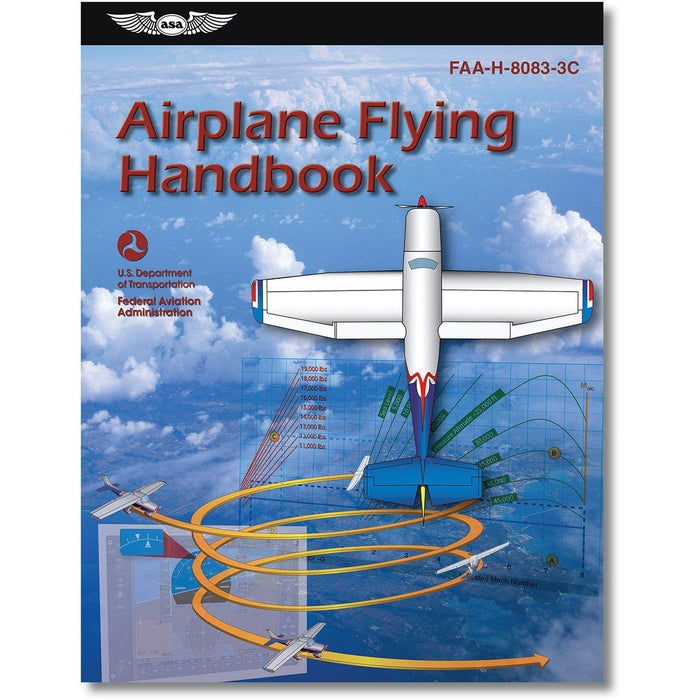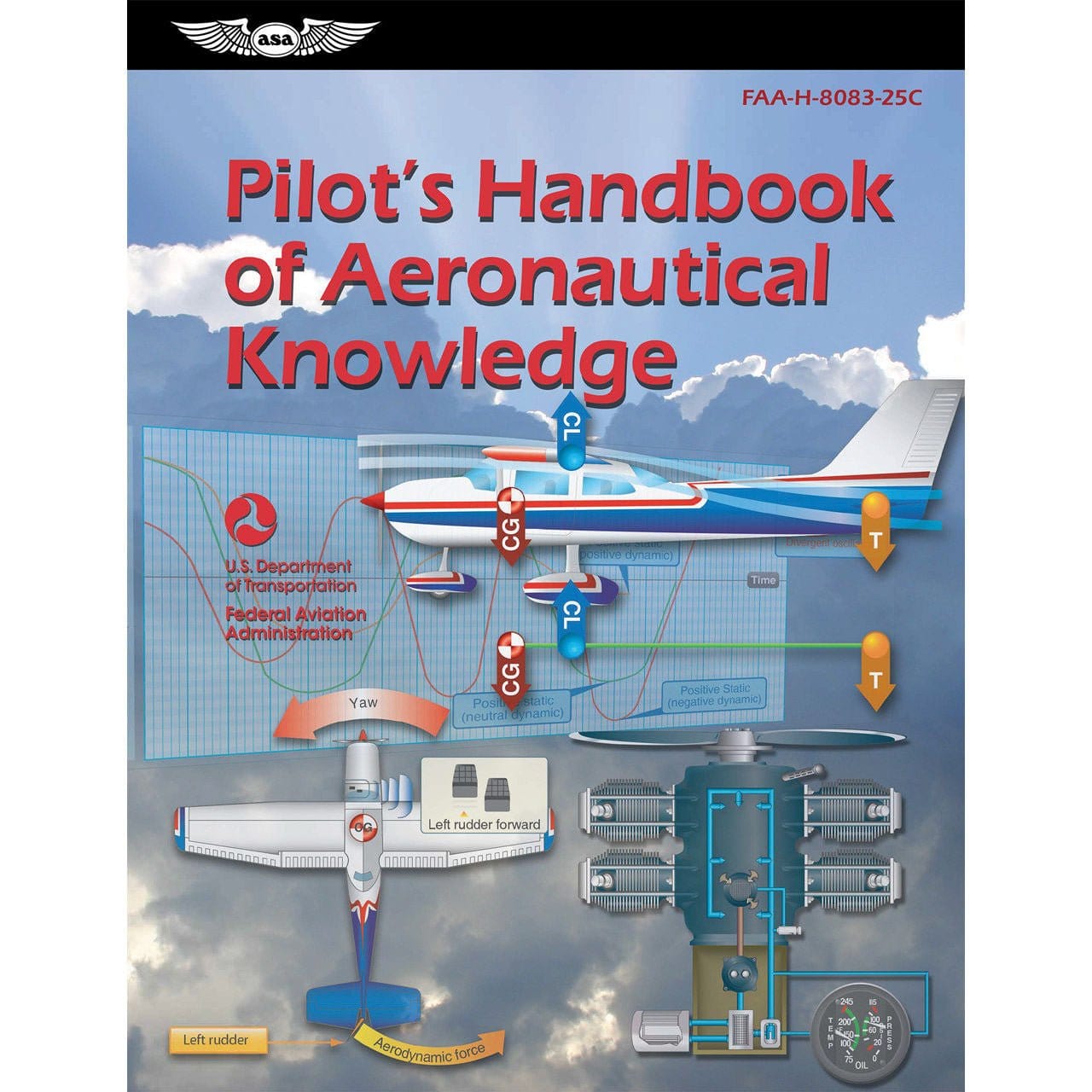Graveyard spiral – even the name sounds deathly ominous. Clearly if you have the misfortune to enter this type of spin, your fate is already sealed and you are doomed, right? Not so fast. Is this scenario dangerous? Absolutely. Have many pilots including John F. Kennedy Jr. died after going into a graveyard spiral? Yes. Do you have to be one of them? Definitely not.
Continue reading as we break down the details of what a graveyard spiral is, what causes it, how to recognize and avoid it, plus how to recover from a fully developed spiral.
What is a graveyard spiral?
A graveyard spiral – also known as a death spiral or suicide spiral – is an accidental high-rate-of-descent tight banked turn which if not corrected ends in structural failure or an almost certainly fatal high-speed impact with the ground.
When is a graveyard spiral most likely to occur?
A graveyard spiral typically takes place when a pilot becomes disorientated or has little to no visual horizon reference, so it makes sense that these types of accidents are most common on dark nights and when flying in Instrument Meteorological Conditions (IMC).
IFR pilots are used to relying on their instruments rather than their senses, so they may be less likely to fall prey to a graveyard spiral. Since VFR pilots are accustomed to using their senses not instrumentation during flight, they are especially vulnerable to this phenomenon.
VFR pilots should be alert to the possibility of entering a graveyard spiral if they accidently find themselves flying into a cloud or over unlit terrain on a dark moonless night with no visual horizon.
What causes a graveyard spiral?
The graveyard spiral is caused by a combination of physical and physiological factors. It is one of the commonly documented types of spatial disorientation illusions attributed to vestibular causes.
(Image by Federal Aviation Administration - Pilots Handbook of Aeronautical Knowledge, Public Domain)
Our body’s vestibular system uses sensory input from our eyes and receptors in our inner ear to help our brain detect movement, determine our spatial orientation, and maintain balance. A vestibular illusion occurs when there is a disconnect between reality and the sensory feelings supplied by our vestibular receptors.
In VFR conditions, looking at the horizon allows our eyes to offset any glitches with our inner ear receptors, but in instrument meteorological conditions, we are fully reliant on those vestibular receptors. The problem is that the 3 fluid-filled canals which alert us to changes in pitch, roll and yaw can be tricked.
(Image by Federal Aviation Administration - Pilots Handbook of Aeronautical Knowledge, Public Domain)
Normally we perceive movement when a shift in the inner ear fluid activates sensory receptors in the ear canals’ hair cells. Sudden movements trigger a strong receptor response, but if our spatial orientation changes very gradually, the fluid may move so slowly that it does not trigger the receptors and we do not feel as though we have moved.
When a VFR pilot loses sight of the horizon, if they continue to fly by feel, it does not take long before they may inadvertently enter a slight banking turn. The rate of roll in this turn is so slow that it does not trigger a response from the vestibular system’s sensory receptors. As far as the pilot knows and feels, the aircraft is still level.
While in this unrecognized banking turn, since the pilot is not compensating for a loss of lift, the plane descends and the pilot then senses what they believe to be a wings-level descent. The pilot pulls back on the yoke which would indeed check the descent if the aircraft was wings-level.
Unfortunately all this action does during the banked descent of a graveyard spiral is serve to tighten the spiral and further increase the rate of descent. If the pilot continues pulling back, the spiral will continue tightening and the plane will continue to accelerate until it either experiences structural failure or impacts the ground.
(Image by Federal Aviation Administration - Pilots Handbook of Aeronautical Knowledge, Public Domain)
What is the difference between a graveyard spin and a graveyard spiral?
The main differentiation between a graveyard spiral and a spin is the aerodynamic status of the aircraft. A graveyard spin is a form of a stall. In a spin, one wing stalls before the other inducing rotation around the vertical axis of the plane.
This rotation looks and feels similar to a spiral except for the fact that the wings are stalled and the speed is lower. During a graveyard spiral, on the other hand, both wings are still flying, there is no loss of flight controls, and the aircraft is traveling at a higher rate of speed.
The graveyard spin and graveyard spiral both involve a form of vestibular illusion, however in the case of the graveyard spin, the pilot feels the spinning sensation in the same direction as the aircraft. In both a spin and a spiral, however, your inner ear plays tricks on you, and upon return to a wings-level attitude, you will feel like you are in a banking turn or a spin.
To recover from a graveyard spin, use the standard P.A.R.E. (power to idle, ailerons to neutral, rudder opposite the spin, elevator forward) stall recovery procedure sequence.
How do you recover from a graveyard spiral?
The key tenant to remember in a graveyard spiral recovery situation is “trust your instruments.” It will feel wrong. Your body will want to override the control inputs that the instruments are directing you to make, but if you want to live through this, you absolutely must trust your instruments.
Once you have committed to trusting your instruments no matter what your senses are telling you, the actual recovery procedure is straightforward.
First, reduce power to idle. Then level your wings based on what your attitude indicator and heading indicator show, not by what your inner ear feels. Once you have unloaded the wings, check your descent by slowing pulling back to a nose-level attitude.
Confirm with your altimeter and vertical speed indicator. Now that you have stabilized your aircraft and recovered from the spiral, add power to resume normal flight.
What does it feel like to be in a graveyard spiral?
During the lead up to a graveyard spiral, as the plane slowly enters a banked turn after loss of visual horizon reference, the gradual nature of the turn will make it imperceptible to your senses. You will feel like you are still flying straight and level, or you may perceive a slight descent.
If you have no attitude indicator, do not consult it, or do not trust it, and elect to simply pull back to correct the descent, as the spiral tightens, you will continue to feel the descent but may not recognize the turn.
If you follow the attitude indicator and straighten your wings to resume straight and level flight, you will now feel like you are making a banking turn in the opposite direction as your inner ear continues to play tricks on you. You may be tempted to revert to your previous attitude which felt level to you.
In one of AOPA’s Never Again Online articles titled “Pushing it Too Far,” seasoned pilot Don Taylor recounts the sensations he experienced while caught in a graveyard spiral in his Cessna 140. Upon entering a thick black cloud, Don quickly banked right to make a 180-degree turn and exit the IMC conditions, but when he completed the turn, he was still in the soup.
As he thinks back to trying to straighten out the aircraft after the turn, Don recalls, “regardless of my control, the Angel [plane] just didn’t feel straight and level. In my imagination, I was still in a steep right bank, although I realized that I had the left rudder pedal jammed into the floor plate. The impression of a right bank was so vivid that I couldn’t lift my left foot! I watched the airspeed build up: 150, 160—still increasing.
The altimeter began to unwind. My instinct was to pull back on the wheel, but I checked it because somewhere I had read that a spiral dive tightens when the victim attempts to maintain altitude. And I knew now that I was in the clutches of that deadly killer, the ‘graveyard spiral.’”
How to avoid a graveyard spiral
The most conservative way to avoid a graveyard spiral is to never fly on dark nights or in instrument meteorological conditions. Of course, this is not always practical, and there are times when VFR conditions rapidly deteriorate into IMC.
Garry Wing of Fly The Wing demonstrates how quickly a VFR pilot can unknowingly drift into a banked turn after losing visual horizon. He then shows how to execute a timed 1-minute standard rate turn using your turn coordinator to reverse course 180-degrees and exit the IMC conditions that you have inadvertently entered.
Take Away
The bottom line is that all pilots should be trained and proficient on the use of basic cockpit instrumentation, especially when it comes to handling scenarios like a bank turn or during night flight. A flight instructor plays a crucial role in sharing this knowledge and preparing pilots to rely on their instruments effectively.
The ability to read and trust their instruments is what separates a pilot who recognizes and corrects a graveyard spiral from the pilots who continues to trust their senses over the instruments during the long spiral all the way down to the crash site.
The vestibular system, responsible for maintaining balance and orientation, can affect pilots during maneuvers such as bank turns and navigating through potentially disorienting night flights.
Without a thorough understanding of their vestibular system and the importance of instrument reliance, pilots may find themselves in dangerous situations, such as a death spiral, where spatial disorientation takes over.
Proper training and respect for basic cockpit instrumentation can make all the difference in ensuring safe flights and preventing tragic outcomes.
By instilling this into pilots, flight instructors are an important role in shaping aviators who can handle challenging scenarios with confidence and precision, avoiding potential disasters associated with spatial disorientation in bank turns, graveyard spirals, and night flights.
We highly recommend reading the Airplane Flying Handbook.

|
Airplane Flying HandbookFor decades, the FAA's Airplane Flying Handbook has served as the foundational resource on the numerous flight maneuvers fixed-wing pilots must master. |
Want to learn about more flight maneuvers?
Our guides are designed to help student pilots become professional pilots and for private pilots to brush up on their knowledge and skills.
-
How To Fly Turns Around A Point (Complete Guide + Lesson Plan)
-
The Chandelle Maneuver: What it is and Why You Should Learn to Fly it
- Turn Coordinator Guide: What It Is and How to Use it to Avoid Slips and Skids
Did you find this article helpful?
Do you think we missed anything important? Let us know in the comments below!
















